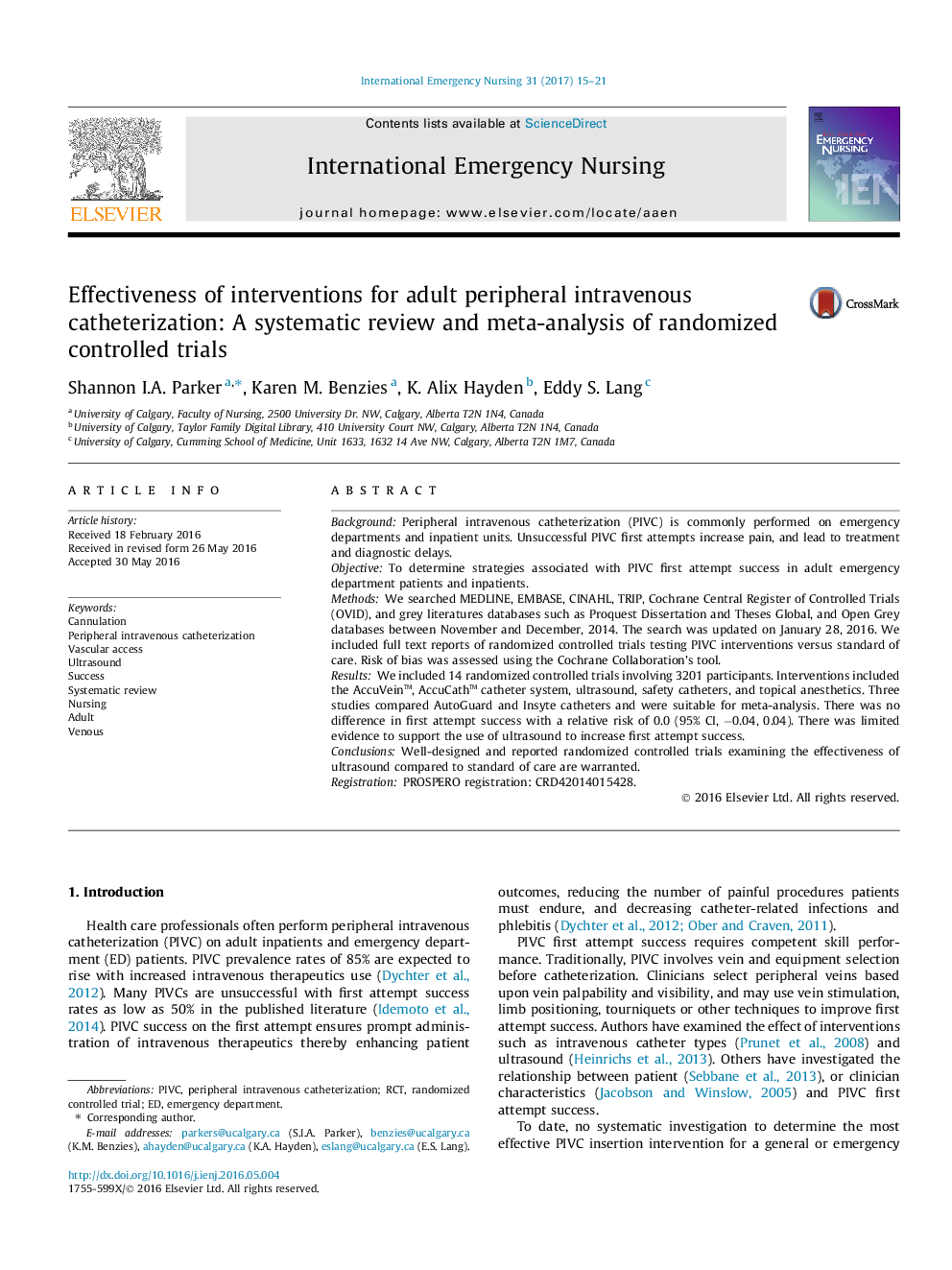| Article ID | Journal | Published Year | Pages | File Type |
|---|---|---|---|---|
| 5563080 | International Emergency Nursing | 2017 | 7 Pages |
â¢Safety catheters do not decrease PIVC first attempt success.â¢Vein visualization equipment to enhance PIVC first attempt success is not supported.â¢Tools to prospectively identify difficult venous access patients are needed.
BackgroundPeripheral intravenous catheterization (PIVC) is commonly performed on emergency departments and inpatient units. Unsuccessful PIVC first attempts increase pain, and lead to treatment and diagnostic delays.ObjectiveTo determine strategies associated with PIVC first attempt success in adult emergency department patients and inpatients.MethodsWe searched MEDLINE, EMBASE, CINAHL, TRIP, Cochrane Central Register of Controlled Trials (OVID), and grey literatures databases such as Proquest Dissertation and Theses Global, and Open Grey databases between November and December, 2014. The search was updated on January 28, 2016. We included full text reports of randomized controlled trials testing PIVC interventions versus standard of care. Risk of bias was assessed using the Cochrane Collaboration's tool.ResultsWe included 14 randomized controlled trials involving 3201 participants. Interventions included the AccuVeinâ¢, AccuCath⢠catheter system, ultrasound, safety catheters, and topical anesthetics. Three studies compared AutoGuard and Insyte catheters and were suitable for meta-analysis. There was no difference in first attempt success with a relative risk of 0.0 (95% CI, â0.04, 0.04). There was limited evidence to support the use of ultrasound to increase first attempt success.ConclusionsWell-designed and reported randomized controlled trials examining the effectiveness of ultrasound compared to standard of care are warranted.RegistrationPROSPERO registration: CRD42014015428.
